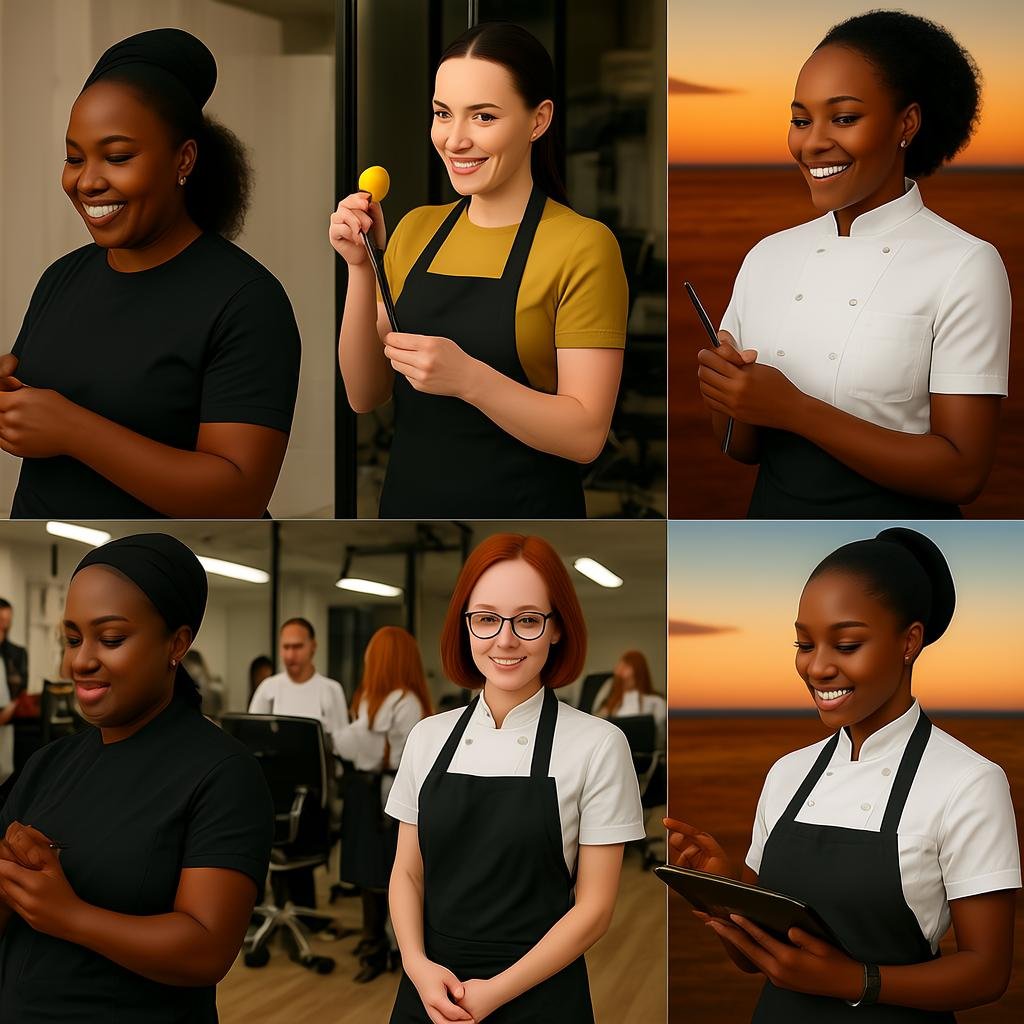Salon vs. Spa: What’s the Difference in American Beauty Culture?

Content
In the landscape of American beauty culture, two establishments reign supreme when it comes to personal care and pampering: salons and spas. While many people use these terms interchangeably, understanding the distinction between them can help you choose the right experience for your needs and budget.
The Traditional Salon: Focused on Beauty Services
Salons have been cornerstone institutions in American beauty culture since the early 20th century. These establishments primarily focus on hair, nails, and basic beauty services. When you walk into a salon, you’re typically looking for:
Hair Services:
- Haircuts and styling
- Coloring and highlighting
- Perms and chemical treatments
- Beard and mustache grooming
Nail Services:
- Manicures and pedicures
- Nail art and enhancements
- Basic nail maintenance
Other Beauty Services:
- Makeup application
- Waxing and hair removal
- Basic facial treatments
Salons tend to be more functional in their approach, emphasizing technical skill and efficiency. The atmosphere is often bright, business-oriented, and focused on delivering specific beauty results. Pricing is generally more accessible, with services ranging from $20 for a basic haircut to $200+ for complex color treatments.
The Spa Experience: Wellness and Relaxation
Spas represent a more holistic approach to personal care, emphasizing relaxation, wellness, and therapeutic benefits. The modern spa movement in America gained momentum in the 1980s and 1990s, influenced by European spa traditions and growing interest in wellness culture.
Signature Spa Services Include:
- Full-body massages (Swedish, deep tissue, hot stone)
- Comprehensive facial treatments
- Body wraps and scrubs
- Aromatherapy sessions
- Hydrotherapy treatments
Wellness-Oriented Offerings:
- Meditation and mindfulness sessions
- Fitness classes
- Nutritional counseling
- Alternative therapies (acupuncture, reflexology)
Spa environments are designed for tranquility, often featuring soft lighting, calming music, and luxurious amenities like saunas, steam rooms, and relaxation lounges. The experience extends beyond mere service delivery to create a complete sensory journey focused on stress relief and rejuvenation.
Key Differences in American Beauty Culture
Purpose and Philosophy
Salons are primarily about transformation and maintenance – making you look your best. Spas focus on restoration and wellness – helping you feel your best. This fundamental difference shapes everything from service menus to interior design.
Service Duration and Pace
Salon services are often quick and efficient, designed to fit into busy schedules. Spa treatments typically require longer time commitments and encourage guests to slow down and savor the experience.
Pricing Structure
Salon pricing varies widely but generally offers more affordable regular maintenance services. Spa treatments command premium prices, positioning themselves as special occasion or luxury experiences rather than routine care.
Cultural Perception
In American culture, salons are seen as essential beauty maintenance destinations – places people visit regularly. Spas are often viewed as indulgent treats, reserved for celebrations, anniversaries, or when seeking stress relief.
The Blurred Lines
Interestingly, the distinction between salons and spas has become increasingly blurred in recent years. Many establishments now offer hybrid services, positioning themselves as “spa salons” or “wellness beauty centers.” This evolution reflects changing consumer preferences for integrated experiences that combine beauty results with relaxation benefits.
Modern Trends Include:
- Salons offering massage chairs and aromatherapy during hair services
- Spas providing blowouts and makeup services
- Day spas incorporating beauty bars and nail stations
- High-end salons creating spa-like atmospheres
Making the Right Choice
Understanding these differences can help you navigate American beauty culture more effectively:
Choose a Salon When You Need:
- Regular haircuts or color maintenance
- Quick beauty services
- Technical expertise for specific looks
- More budget-friendly options
Choose a Spa When You Want:
- Relaxation and stress relief
- Special occasion pampering
- Holistic wellness treatments
- A complete sensory experience
The Cultural Significance
Both salons and spas play important roles in American social culture. Salons have historically served as community gathering spaces, particularly for women, where personal grooming coincides with social interaction. Spas have become symbols of self-care culture, reflecting society’s growing recognition of mental health and wellness needs.
As American beauty culture continues to evolve, both establishments are adapting to meet changing consumer demands for convenience, personalization, and value. Whether you’re seeking a quick trim or a full day of pampering, understanding the salon versus spa distinction ensures you’ll find exactly what you’re looking for in your beauty and wellness journey.
The key is recognizing that both serve valuable purposes – sometimes you need to look good, other times you need to feel good, and increasingly, consumers are seeking experiences that accomplish both goals simultaneously.
